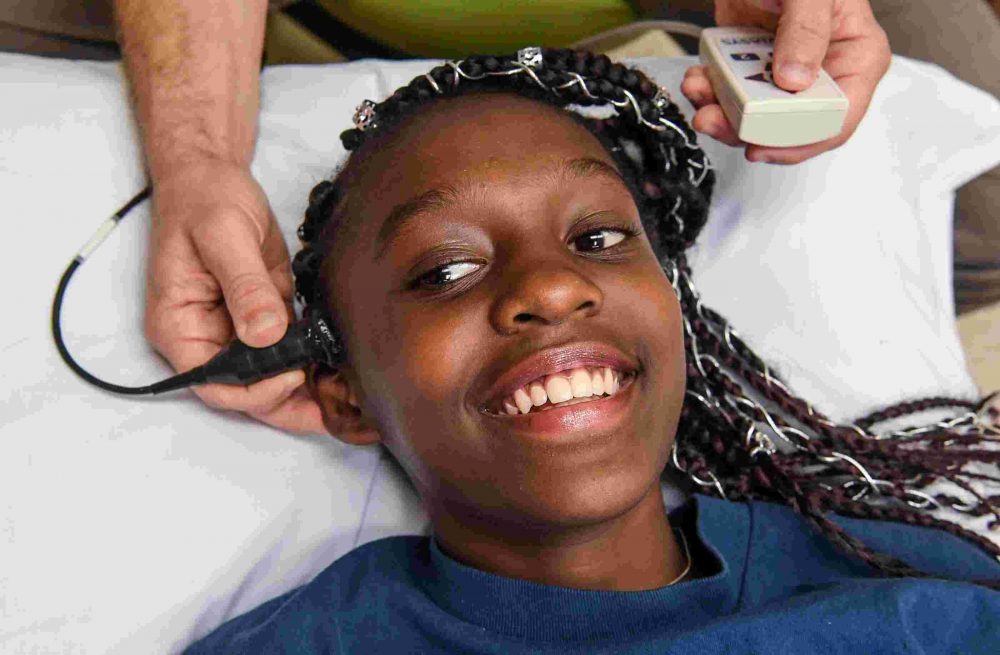Sickle-cell disease and other haemoglobin disorders fact sheet

Haemoglobin disorders are inherited blood diseases that affect how oxygen is carried in the body.
Fact Sheet
Key facts
- Approximately 5% of the world’s population carries trait genes for haemoglobin disorders, mainly, sickle-cell disease and thalassaemia.
- Haemoglobin disorders are genetic blood diseases due to inheritance of mutant haemoglobin genes from both, generally healthy, parents.
- Over 300 000 babies with severe haemoglobin disorders are born each year.
- The health burden of haemoglobin disorders can be effectively reduced through management and prevention programmes
What are haemoglobin disorders?
Haemoglobin disorders are inherited blood diseases that affect how oxygen is carried in the body. Haemoglobin disorders fall into two main categories: sickle-cell disease and thalassaemias.
- Sickle-cell disease is characterized by a modification in the shape of the red blood cell from a smooth, donut-shape into a crescent or half moon shape. The misshapen cells lack plasticity and can block small blood vessels, impairing blood flow. This condition leads to shortened red blood cell survival, and subsequent anaemia, often called sickle-cell anaemia. Poor blood oxygen levels and blood vessel blockages in people with sickle-cell disease can lead to chronic acute pain syndromes, severe bacterial infections, and necrosis (tissue death).
- Thalassaemias are also inherited blood disorders. People with thalassaemia are not able to make enough haemoglobin, which is found in red blood cells. When there is not enough haemoglobin in the red blood cells, oxygen cannot get to all parts of the body. Organs then become starved for oxygen and are unable to function properly. There are two major types of thalassaemia, alpha and beta, which are named for the two protein chains that make up normal haemoglobin. Alpha and beta thalassaemia have both mild and severe forms.
Facts about haemoglobin disorders
- It is estimated that each year over 300 000 babies with severe forms of these diseases are born worldwide, the majority in low and middle income countries.
- Approximately 5% of the world’s population are healthy carriers of a gene for sickle-cell disease or thalassaemia. The percentage of people who are carriers of the gene is as high as 25% in some regions.
- These conditions are most prevalent in tropical regions; however population migration has spread these diseases to most countries.
- Thalassaemias are the most common in Asia, the Mediterranean basin, and the Middle East.
- Sickle-cell disease predominates in Africa.
What causes haemoglobin disorders?
Haemoglobin disorders are inherited from parents in much the same way as blood type, hair colour and texture, eye colour and other physical traits.
Sickle-cell disease and severe forms of thalassaemia (thalassaemia major) can occur only when both parents are carriers of trait genes for the particular condition. A child who inherits two of the same trait genes – one from each parent – will be born with the disease. However, a child of two carriers has only a 25% chance of receiving two trait genes and developing the disease, and a 50% chance of being a carrier. Most carriers lead completely normal, healthy lives.
How can haemoglobin disorders be reduced?
Haemoglobin disorders can be effectively reduced through a strategic balance of disease management and prevention programmes.
Sickle-cell disease can be managed by simple procedures including:
- high fluid intake
- healthy diet
- folic acid supplementation
- pain medication
- vaccination and antibiotics for the prevention and treatment of infections
- a number of other therapeutic measures.
Thalassaemia major requires regular blood transfusions to maintain an adequate supply of haemoglobin and sustain life. As a result of multiple transfusions, organs become severely overloaded with iron and a specific treatment is needed to manage this condition. Thalassaemias can be cured by a successful bone-marrow transplant, however this procedure is expensive and not readily available in most settings. Recently, gene therapy has been successfully applied to a patient with thalassaemia.
The most cost-effective strategy for reducing the burden of haemoglobin disorders is to complement disease management with prevention programmes. Inexpensive and reliable blood tests can identify couples at risk for having affected children. This screening is especially opportune before marriage or pregnancy, allowing couples to discuss the health of their family. Subsequent genetic counselling informs trait carriers of risks that the condition may be passed along to their children, the treatment needed, if affected by a haemoglobin disorder, and the possible options for the couple. Prenatal screening of genetic diseases raises specific ethical, legal and social issues that require appropriate consideration.
AHO Action Plan
The governing bodies of AHO have adopted two resolutions on haemoglobin disorders. The resolution on sickle-cell disease calls to strengthen their response to these conditions. In addition, a resolution on the prevention and management of birth defects, including sickle-cell disease and thalassaemias.
Specifically, AHO will:
- increase awareness of the international community of the global burden of these disorders;
- promote equitable access to health services;
- provide technical support to countries for the prevention and management of these disorders; and
- promote and support research to improve quality of life for those affected.
Budget for AHO Action Plan
US$400 million
Please donate and help sufferers of sickle-cell
Sources: WHO, PAHO

